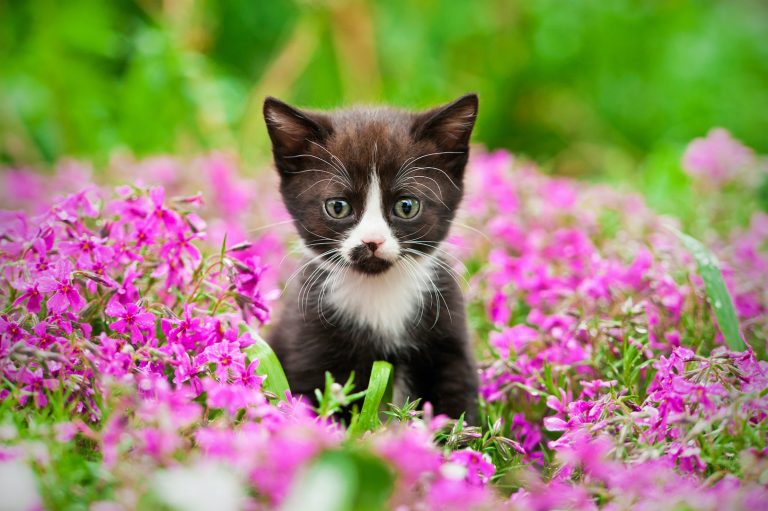t’s almost time to open up the windows and doors and let the fresh air and smells of spring in. Springtime is one of the best times to attend to lawn and garden needs, planting new foliage and blooms, and enjoying spring yard work. Spring is also a tricky time for lawn and garden pet poison dangers.
Plants, things that grow in the yard, along with fertilizers and other hazards, can hurt pets. That’s why your friends at Westarbor Animal Hospital are here to give you the scoop about lawn and garden poisons, and plants that are poisonous to cats and dogs, so you can better protect your furry one.
What’s Growing in the Yard?
Adding color and beauty to your home and garden is something every green thumb dreams of. And now that the time is right, what should you plant? What shouldn’t you plant? There are several plants toxic to cats and dogs that grow abundantly this time of year, and are popular gardening choices for many, despite being dangerous to pets.
The flowers and plants most poisonous to Dogs are:
- Azalea (potentially fatal)
- Bluebells (potentially fatal)
- Castor bean
- Cyclamen (potentially fatal)
- Dumbcane/Dieffenbachia
- English Ivy
- Foxglove (potentially fatal)
- Hemlock
- Mistletoe
- Oleander
- Onion (potentially fatal)
- Rhododendron (potentially fatal)
- Rhubarb leaves (potentially fatal)
- Thorn Apple/Jimsonweed
- Yew (potentially fatal)
- Wild mushrooms that aren’t safe
There are many others to avoid. See a complete list at PetMD.com.
The flowers and plants most poisonous to Cats are:
- Amaryllis
- Autumn Crocus
- Azalea/Rhododendron (potentially fatal)
- Castor Bean
- Chrysanthemum
- Cyclamen root (potentially fatal)
- Daffodils/narcissus bulbs
- Foxglove (potentially fatal)
- Hyacinth (bulbs)
- Ivy and English Ivy
- Kalanchoe
- Lilies, Peace Lily (potentially fatal)
- Marijuana
- Oleander
- Pothos
- Rhubarb leaves (potentially fatal)
- Sago Palm
- Schefflera
- Tulips
- Yew
For a complete list of plants toxic to cats, see PetMD.com.
Levels of toxicity will depend on the plant and the amount ingested in relation to how big your pet is. Some plants are only toxic if a pet eats the root or bulb, while others are toxic in their entirety. Because there is such a wide range of plants that can harm pets, it’s wise to consult your veterinarian or an online resource, such as PetMD.com or the ASPCA’s list of toxic and non-toxic plants before doing any shopping.
Symptoms if Your Pet Eats Toxic Plants
Clinical symptoms of plant toxicity include:
- Nausea/vomiting
- Diarrhea
- Bloody stool
- Irregular heartbeat
- Drooling
- Lethargy
- Inability to urinate
- Disorientation
- Collapse
- Seizure
Be quick to phone our clinic or the Pet Poison Helpline for instructions for rapid care. Timing is of the essence in a poisoning scenario, so quick thinking and action can help save your pet’s life.
Other Lawn and Garden Hazards
Many chemicals we use on our lawn and garden may seem like they wouldn’t be of interest to a pet. Unfortunately, many pets love to root around in freshly amended soil and grass. Gardening entails a lot of hard work, and we come to rely on additives to help keep pests from eating our plants. We also amend the soil for a healthy lawn or garden.
It may come as a surprise that these popular products can be dangerous to four-legged friends.
- Blood meal – Blood meal consists of flash-frozen blood that is ground up as a nitrogen fix for soil. If your pet eats blood meal, it can cause diarrhea and vomiting, and even pancreatitis, a serious inflammation of the pancreas.
- Rose and flower fertilizers – Fertilizers that contain ingredients that are in the organophosphates (OP) family are quite poisonous to pets. Symptoms include increased salivation, respiratory issues, and seizures.
- Pesticides, rodenticides, and insecticides – These contain poisonous chemicals intended to kill insects or small pests, but are also poisonous to cats and dogs.
- Cocoa husk shells – This kind of mulch contains the cocoa ingredients caffeine and theobromine, which are both hazardous if ingested.
- Weed-killers – It is best to keep pets off the grass or away from weed-killers for about 48 hours until absorbed into the plants or soil. Look for dog-friendly weed-killers instead.
Items to be on the lookout for are spring fungus/mushrooms, mold, and compost. These can sometimes be poisonous. Remove any fungi and mushrooms from the yard and cover all compost bins or areas. Compost is particularly appetizing to curious dogs and often contains toxic food and mold.
Plants Toxic to Cats and Dogs
By doing your due diligence when it comes to keeping toxic plants and substances out of the yard (or away from your pet), you can keep your pet safe. If your yard is safe, they can enjoy the great outdoors with you. For more information about toxic plants, or if you would like to schedule an appointment, please call us. (And don’t forget to stop and smell the roses while you are at it!)


